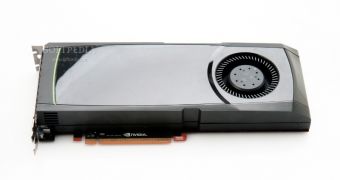Ever since participating in NVIDIA's conference call for the launch of their brand-new GTX 580 graphics card, we've been sort of curious about their “performance throttling” technology, which limits the GPU's capabilities once its hits the peak performance levels. The limitation does have a purpose, namely that of protecting the hardware against damage on the long-term, especially if used by people with relatively little technical knowledge, but power-users and overclocker were certainly not happy to hear about the reduced clock speeds when running 3D-intensive applications. During out testing of the card, we've been able to “feel” the effects of this technology first-hand, the GTX 580 changing its behavior when faced with some power-intensive applications, such as the FurMark or OCCT benchmark suites or even some games. However, it seems that this problem might be a thing of the past, as Wizzard, the guy behind famous tech website TechpowerUp and developer of one of the world's best-known GPU diagnostics and monitoring utilities, GPU-Z, has managed to come up with a software solution that manages to circumvent the aforementioned limitation. The respective function can be activated via a new command-line argument for GPU-Z, that's "/GTX580OCP". Practically, users have to start the GPU-Z executable (within Windows, using Command Prompt or shortcut), using that argument, and it will disable the clock speed throttling mechanism for the entire session. TechpowerUp has already posted a test build of this enhanced GPU-Z version, which otherwise carries the same-exact feature-set of GPU-Z 0.4.8. Of course, the guys do mention that anyone who opts to use this solution should be fully aware that the effects of running the graphics card outside of its power specifications may be pretty bad, resulting in damage to the card or motherboard, so everyone who tries it should have extensive hardware-related knowledge (or shouldn't mind losing a pretty serious amount of money, which they'll have to spend in order to fix/replace their damaged components).
hot right now

 14 DAY TRIAL //
14 DAY TRIAL //